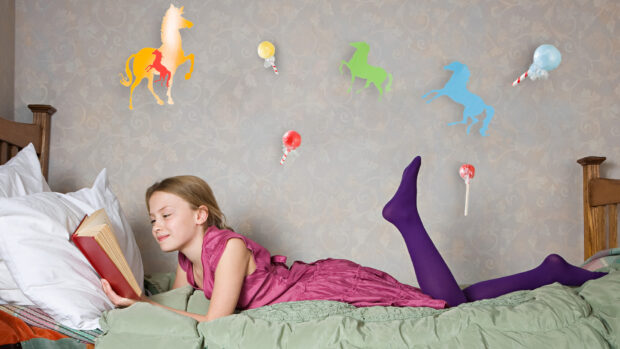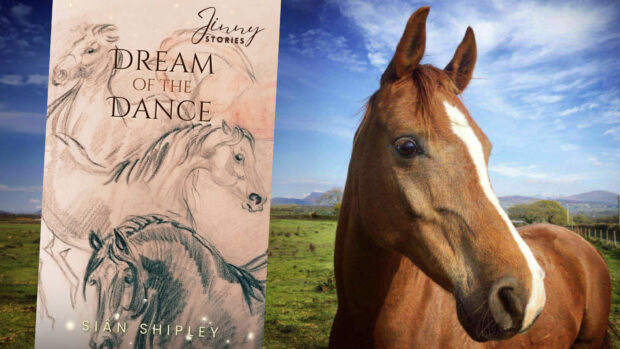In the latest edition of Ingrid Klimke's book 'Basic training of the young horse', originally written with her late father Reiner, the European eventing team gold medallist looks at what you need to know ahead of a young horse's first competition
The test of correct basic training is the first one-day event competition.
At home the familiarity of the indoor school, outdoor arena and local countryside plays an important role. The horse is not distracted, is calm and therefore easier to ride. Sometimes the rider gets it wrong, especially in the dressage phase. With the showjumping and the cross-country phases the courses are similar to those practised at home.
You can lose in the dressage competition because of self-deception if you think the horse is better than he really is, and the judge’s opinion can sometimes bring you down to earth with a bump.
However, the judge’s opinion is of great importance and notice should be taken of it. A large number of experienced judges are needed these days to cope with the number of shows, classes and competitors. Basically one must trust that in every competition the judge will be diligent and judge fairly.
Every experienced rider will confess to sometimes being foolish and having been taken unawares at the first competition. Success in this situation can only come with hindsight.
Be prepared for things not to go as planned
At every competition one must be prepared for things not to go as planned. This applies especially with the young horse. The atmosphere at a show is unfamiliar. People, banners, loudspeakers, and many different horses all contribute to unsettling the young horse. It takes about one show season for the youngster to perform as well at a competition as he does at home. Only then can one prepare properly for each outing.
The young horse needs frequent outings to a variety of different shows before the first proper one-day event. We also load up the horses and take them to another stable yard and practice different exercises in new surroundings.
It is best to plan which competition to enter within a set timescale. Once you have planned the date of the competition, you will have a clearer idea of the necessary training programme to follow.
Continued below…

5 things to look for in a young horse
H&H finds out what producers look for in their young horses — from finding something with good conformation to one
Warming up
Most horses will need to be warmed up for about 30–40 minutes. A horse who carries himself easily will need less, and an excitable horse will need longer. Warming up should include loosening exercises followed by dressage movements to ensure accuracy.
For the dressage phase, parts of the test can be practised to make sure that the horse understands them. It is best not to practise the whole test in case the horse starts to
anticipate the movements, which can cause problems.
It is a natural tendency for the rider to want to practise the more difficult movements but this is not wise on the day of the competition.
There is a risk of the horse going against the rider and becoming tense and then not performing well in the actual test. In this situation the rider and trainer have to work on tactful riding. If the horse finds certain movements difficult when working in, the rider must be careful not to spoil everything that has already been achieved in training.
Just before the competition is not the time to teach the horse anything new. The rider must keep focused on the fundamentals of training, such as working through the back and keeping the horse calm in the dressage or showjumping arena.
In our experience the time allowed for warming up before the first competition should not be too short. Failure in the dressage test is usually because the rider has not taken long enough to warm up.
It is better to take longer so that there is no pressure of time and the horse can relax. Just before the test, some lengthening and shortening of the strides should be ridden to make sure that the horse is responsive to the driving aids. Just before the start, the rider should practise the entry to the test, and praise the horse.
When warming up for the showjumping you could first trot over a small cross-pole after loosening up. With some horses it helps to lay a pole on the ground before it.
After the first jump the horse should be returned to trot and the exercise repeated a few times. To finish, canter a few times over a small upright, which is raised gradually. Follow this with a small oxer with the back pole a little higher. It is important not to jump too high or too many times in order to maintain the horse’s trust and not tire him out.
For the cross-country phase the horse should cantered in a good rhythm after loosening up. Begin over a small natural fence which should be situated in the warm-up arena. Once this has been jumped calmly and confidently, then other obstacles can be jumped.
The last warm-up fence should be jumped at competition speed.
Coping with competition atmosphere
At home one can practise ‘competition riding’. The atmosphere on the day, though, is somewhat different, being unpredictable and more unsettling. This is what makes competing exciting. If one can calculate what will happen beforehand, then there is no enjoyment anymore.
At the first competition, about 10–15 minutes longer than normal should be allowed for working in. We have had horses who were so distracted at first that we had to warm them up for a long time before they would pay attention. A few weeks later they were completely different and needed much less time.
Warming up for the jumping and cross-country phases should be done in a jumping seat and be ridden in the same way as at home. It is essential to walk the course on foot beforehand and plan exactly the route to take from start to finish.
With young horses the inspection of the course is very important if one is to achieve good results. At every jump the exact take-off point must be noted, and this depends on a number of factors including:
– The precise direction/ line you are approaching from.
– The direction you are going in afterwards.
– The condition of the ground on the points of take-off and landing.
– The structure of the obstacles. (With combinations, this includes measuring the distance between elements and deciding at what tempo to ride them.)
The experienced rider calculates each turn in the course and the best approach to each jump.
Reflecting and learning
If there is little success at the first competition, you should not hang your head in shame. We console ourselves with the thought that young horses are not always successful at the beginning and require painstaking preparation beforehand. A horse is not a machine.
Working out what went well and what did not is part of assessing whether the day was successful. Riders should not just blame themselves regardless, without taking these factors into account.
Every competition should be reflected upon. Questions will arise after each individual performance, indicating what is necessary in future training. This can be, for example, how to improve looseness, contact, working through the back, or correcting flexion.
Every competition is valuable and worthwhile when the horse has made progress in his training and improved from the last time out. The rider gains valuable experience and knowledge from each outing which can put to good use in training. The rider can work quietly at home on improving the horse’s performance.




